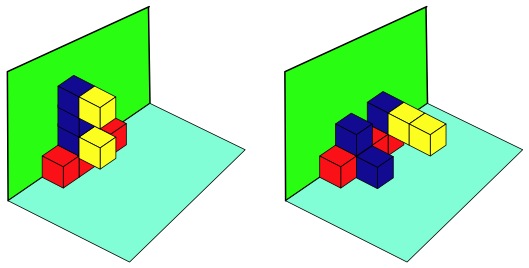Or search by topic
Number and algebra
Geometry and measure
Probability and statistics
Working mathematically
Advanced mathematics
For younger learners
Three Sets of Cubes, Two Surfaces



- Problem
- Teachers' Resources

This is slightly different from Two on Five but is seen as an extension for some pupils. You might like to go there first!
The nine cubes are to be connected in the usual way with the following rules being applied.
The two yellow cubes are not allowed to touch the wall or floor surfaces
The Three blue cubes must touch one surface only, the wall or the floor
The four red cubes must touch both wall and floor surfaces
Here are two examples that obey the rules;

You may also like
Plants
Three children are going to buy some plants for their birthdays. They will plant them within circular paths. How could they do this?
Junior Frogs
Have a go at this well-known challenge. Can you swap the frogs and toads in as few slides and jumps as possible?
Inky Cube
This cube has ink on each face which leaves marks on paper as it is rolled. Can you work out what is on each face and the route it has taken?

